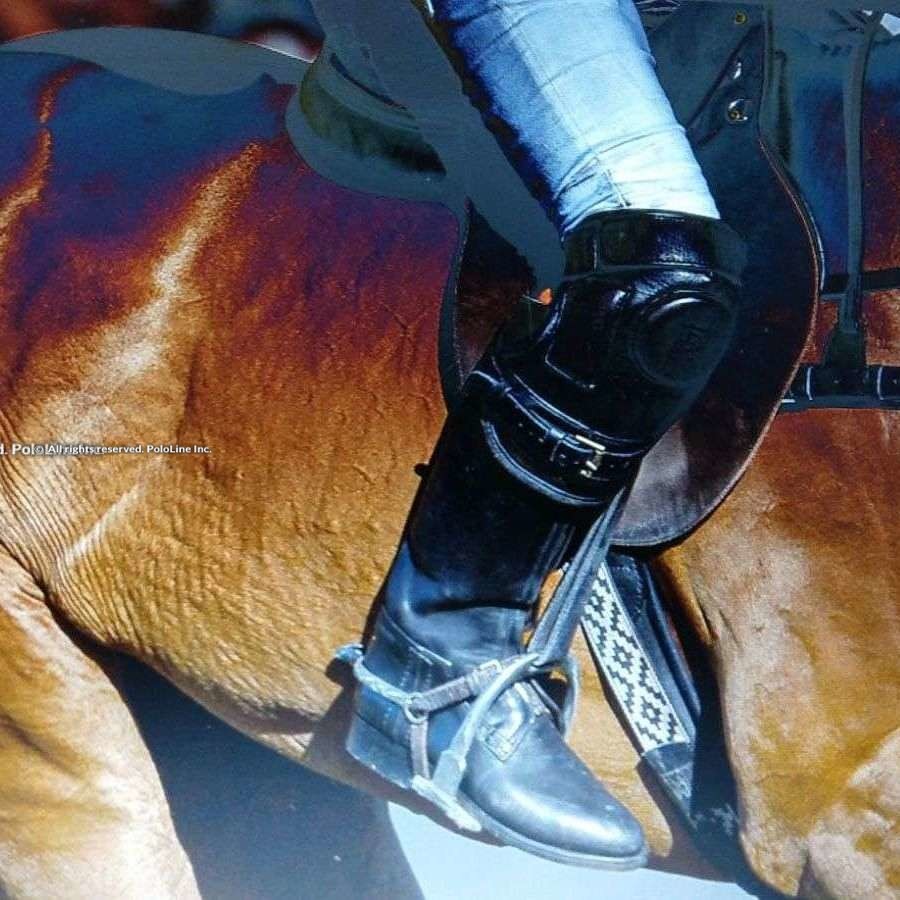The word “estribo,” from its origin, means “handle to climb onto a horse.” When the stirrup was invented and began to be used, the rider gained greater control over the horse, becoming an extension of each other.
The stirrup made a significant difference in warfare; when used in heavy cavalry, they provided not only comfort to the warrior but also ease in using their weapons.
In equestrian sports, stirrups are like the ground in other disciplines, so support and movement on them are fundamental. The horse sets the pace (movement), and the rider adjusts to it, fitting into the stirrups in a rhythm that is easier to feel than describe.
In the specific case of polo, not using stirrups means sitting on the saddle and lacking mobility in the swing and horse handling. When seated, there is no compensation for the horse’s movements; using stirrups, we perceive the horse’s movements, and it perceives ours through the transfer of our body weight.
We notice the upward movements, and the horse notices the downward ones, so considering this principle of shared sensations in the stirrups, we can assess the horse’s balance. By making it gallop, run freely with the saddle on its back, we can observe the mobility of the stirrups. The more balanced the horse, the less the stirrups will move.
Remember that their location corresponds to the projection of the horse’s center of gravity, where movements are dampened when dealing with a balanced horse. Stirrups provide an advantage by giving the player stability, allowing them to make contact with the ball along with the energy accompanying the horse’s movement.
The correct length of the stirrups is something to consider carefully; the player should feel comfortable. What position should be assumed? Standing on the ground, flexing both knees will result in a comfortable, balanced position, ready to move in all directions, much like a boxer, tennis player, or skier.
How to calculate this measurement while mounted? With the legs hanging and seated in the saddle, the base of the stirrup should make contact with the inner ankle bone (the prominent bone of the ankle); we’re talking about approximately 12 cm between the sole of our foot and the stirrup’s base. This will be the distance our foot should travel to fit into the stirrup.
Ideally, you should rest the sole of your foot behind the ball of the foot, on the base of the stirrup, shifting your body weight inward, which will facilitate the grip with the saddle by both knees, toes slightly outward, not more than 45 degrees, and the heel downward. This position will naturally lead to a push, something essential during polo play.
This forms what I call the “Golden Triangle.” Hip-knee-heel, a position that promotes body balance and muscle coordination, enabling us to turn hips and shoulders and calibrate the distance between hand and ball during contact.
The quality, size, and condition of the stirrups, as well as their weight, should always be taken into account. Today, we have wide-based stirrups, and in some cases, anti-slip surfaces, which obviously ensure good support/contact with the foot, making them safer.
A piece of advice when using stirrups would be as follows:
When you feel unstable in the saddle, which is very common at the beginning of the season, lengthen the stirrups a bit. When you feel sluggish, shorten them a bit. Learn to manage the distribution of your body weight between the saddle and the stirrups; there you will find the secret to improving your riding and striking.
